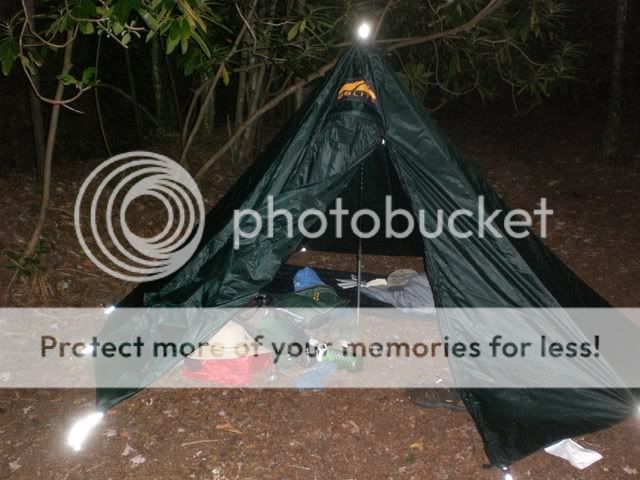I don't have everything photographed, but I use:
Pack: Deuter Aircontact 55+10
It's on the heavy side at 2,7 kg but it is very comfortable and durable.
Tent: Vango Force Ten Helium 200
I looked at a lot of tents when I bought it and it was pretty much the only one that met my demands and was still within my budget. It pitches as one or outer first, weighs about 1,3kg and has aluminium poles. It's advertised as a 2 person tent but it's barely large enough for my sleeping-pad and my backpack, so consider it a "roomy" one person tent for backpackers. I replaced the standard pegs with MSR groundhogs because they're a bit more durable. There's a more expensive version with carbon fibre poles as well by the way, that one weighs around 900 grams.
I pack the tent itself in the bottom compartment of the Deuter together with my rain gear and a lightweight tarp and roll the tent poles in a small piece that I cut off a foam sleeping-pad for protection, and stick that in one of the side (waterbottle) pockets of my pack. The piece of foam doubles as something to sit on.
No pictures, but my sleeping-pad is a Thermarest Neo Air All Seasons. I chose this one for it's comfort and insulating value, it's really warm even when the ground below you is frozen. I chose the heavier large version to have a bit more room @ 700 gram.
My sleeping bag is a Sea to Summit TK2. A down bag was a must for me, and I chose this one in particular because it isn't a full mummy but a bit in between a mummy and a regular square sleeping bag to have a little room to move around in. The foot-box can be opened or you can open it up entirely and use it as a blanket as well. This one keeps me warm to a little below freezing temps without my thermal underwear on, and it weighs just under 1100 gram.
So that's about 6kg or 12 pounds already for my essentials.
A few more important to me items that I usually bring along are:
My water filter:
I chose the Katadyn Hiker Pro for durability, ease of use/maintenance, price and weight.
To keep my phablet (communication, navigation & entertainment system) going I use a Powermonkey Extreme:
It has a 5V as well as a 12V outlet and the battery capacity is 9000mAh. It's ok but could do with a larger solar panel, Oh, and the cable that connects the battery to the panel is complete shit. My advise it to buy some plugs and some wire and make a more durable one yourself if you buy this.
And last but not least; my beloved Solo Stove:
It's a wood-gassing stove but it can be used with an alcohol stove or Esbit cubes as well. It all packs down in to the pot & the pot & stove each have their own little pouches to keep the soot where it belongs.
This together with a water bladder, a folding saw of some sort and a sturdy knife pretty much cover my basics :thumbup:
The wood you see in that ^^ picture is more then enough to boil about two cups of water.














